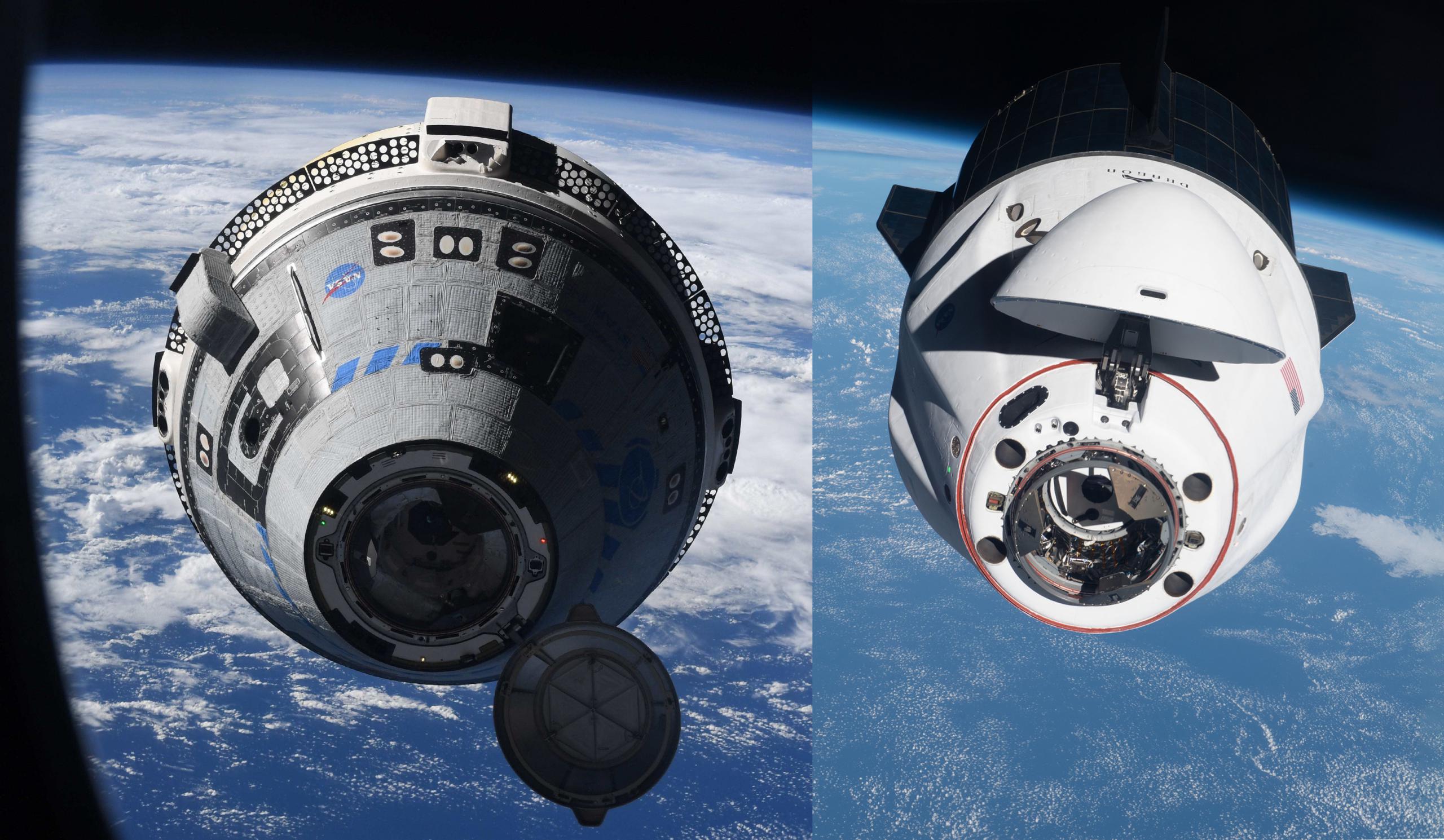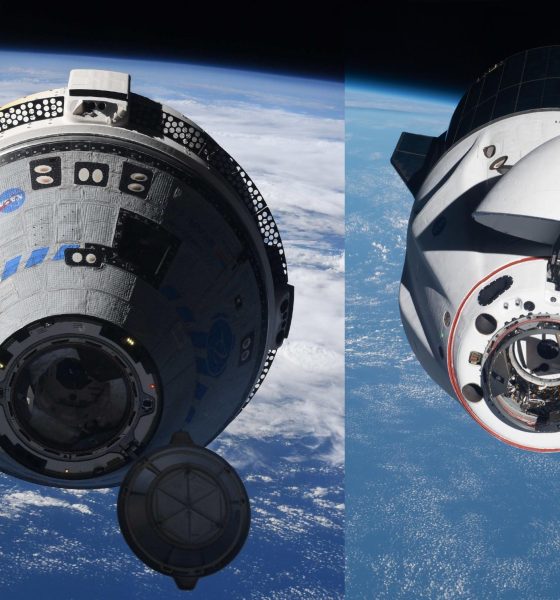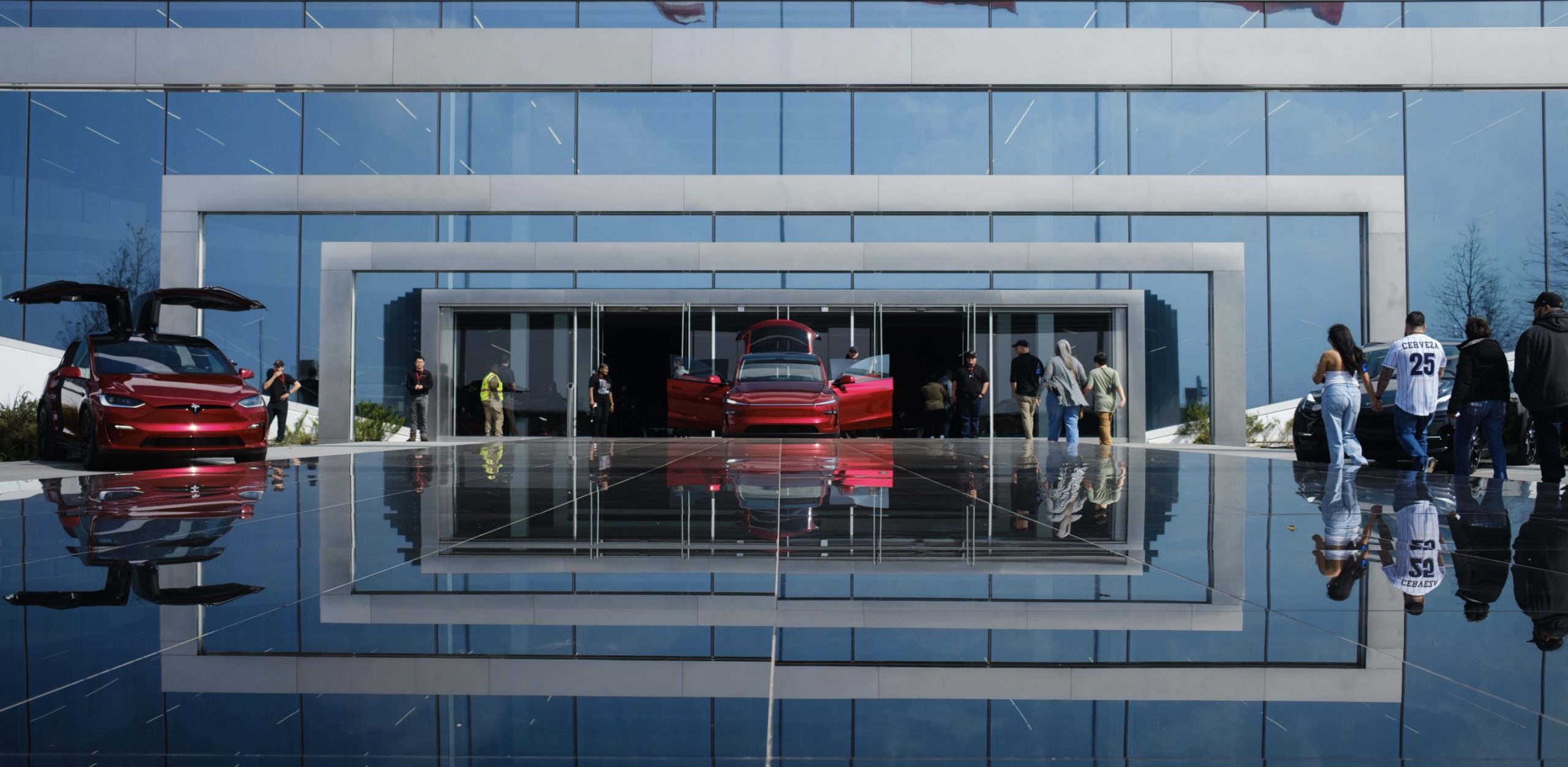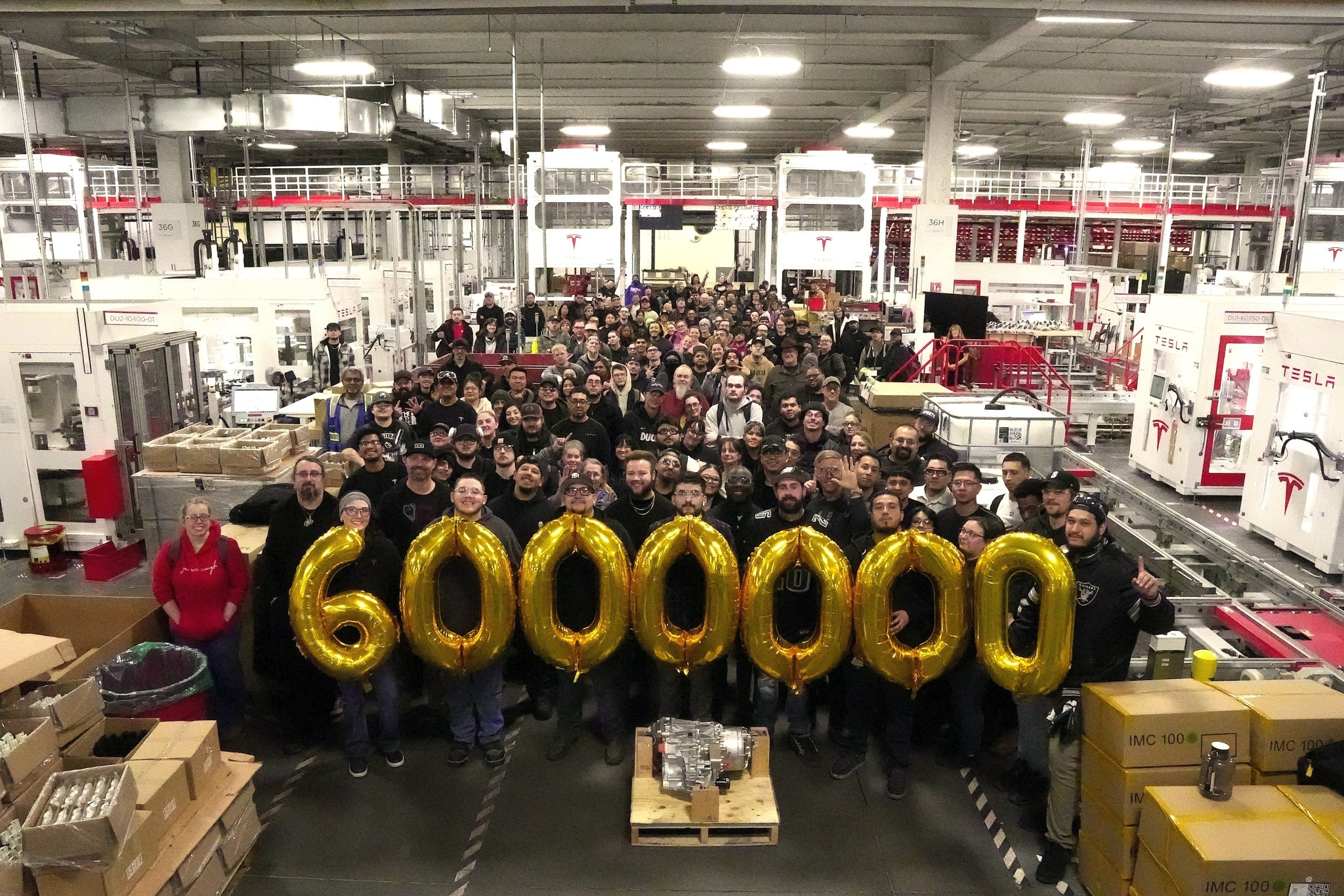

News
Boeing Starliner joins SpaceX’s Crew Dragon at the International Space Station
Boeing’s Starliner crew capsule has successfully rendezvoused, approached, and docked with the International Space Station for the first time, marking major several major milestones for NASA and its second Commercial Crew partner.
Starliner’s second orbital flight test (OFT-2) began as expected with a near-flawless May 19th launch on a United Launch Alliance (ULA) Atlas V rocket. As thousands of employees and stakeholders held their collective breath, the uncrewed prototype safely detached from Atlas V’s Centaur upper stage and propelled itself the rest of the to a stable parking orbit. Two and a half years after their first attempt, Boeing and NASA were then finally able to send Starliner on its way to the International Space Station (ISS) and prepare for proximity operations.
Welcome #Starliner ! pic.twitter.com/F7KVIRO24c— Samantha Cristoforetti (@AstroSamantha) May 21, 2022
As previously discussed on Teslarati, Starliner making it through the first hour or so of flight without running into a catastrophic problem was already a huge milestone for Boeing and a massive improvement over the company’s last two orbital flight test attempts.
“The story of Starliner’s tortured orbital flight test (OFT) campaign began in earnest on December 20th, 2019, when an uncrewed prototype first attempted to launch to the International Space Station (ISS) atop a United Launch Alliance (ULA) Atlas V rocket. A major software bug that could have been easily detected with even the most basic integrated hardware-in-the-loop prelaunch testing caused Starliner to lose control the moment it separated from Atlas V. After hundreds of seconds of unplanned burns of its many attitude control thrusters, Boeing finally regained control but Starliner no longer had enough propellant to safely reach the ISS.
Boeing would later catch and correct another unrelated software bug mere hours before Starliner’s planned reentry and recovery that, if undetected, could have caused the spacecraft’s capsule and service sections to crash into each other shortly after separation.
On July 30th, 2021, shortly before a different uncrewed Starliner was scheduled to reattempt the first Orbital Flight Test, the launch was aborted. Boeing and NASA later reported that 13 of Starliner’s 24 main oxidizer valves failed to open during a prelaunch test just a few hours before liftoff. It was eventually concluded that faulty Aerojet Rocketdyne-supplied valves and poor Boeing integration enabled water intrusion and extensive corrosion. The next OFT-2 launch attempt was delayed by almost ten months, as a result.”
Teslarati.com – May 19th, 2022
Instead of calamity, Starliner’s second OFT and third OFT attempt was mainly greeted with success. After reaching orbit, the spacecraft began raising and ‘phasing’ its orbit to rendezvous with the ISS and completed all the burns and navigation required without major issues. Finally, after several intentional test maneuvers and about an hour of unplanned troubleshooting, Starliner began its final approach and successfully docked with the ISS – joining a SpaceX Crew Dragon – at 8:28 pm EDT on May 20th (00:28 UTC 21 May).
Starliner’s successful docking made it the fourth, fifth, or sixth US spacecraft to reach the ISS, joining the Space Shuttle, three main variants of SpaceX’s Dragon, and Orbital ATK’s (now Northrop Grumman) Cygnus cargo vehicle. It also marked the first time that both NASA Commercial Crew Program vehicles have been simultaneously docked at the space station – a reassuring sign of a future with redundant access after years of Boeing delays forced SpaceX to temporarily become NASA’s sole source of astronaut transportation. While odds are good that SpaceX will ultimately be required to singlehandedly maintain NASA access to the ISS for seven six-month ‘expeditions’ (>3 years), Starliner’s thus-far-successful OFT2 mission significantly improves the odds that the Boeing spacecraft will be fully ready within a year or two.
Nonetheless, Starliner must still safely depart the ISS, lower its orbit, reenter Earth’s atmosphere, and safely touch down for recovery and reuse. Starliner has already accomplished all of those tasks during OFT1, but tensions will still be high. Additionally, Starliner’s performance during OFT2 has been far from perfect. Aside from a few minor issues with coolers and radiators, Boeing and NASA revealed that four of the spacecraft’s several dozen thrusters (two larger maneuvering/control thrusters and two smaller attitude control thrusters) – had failed by the time it was docked. During OFT1, as many as 13 thrusters failed as a result of minutes of unplanned burns, but Boeing was able to recover all but one before reentry.
Technically, that means that both missions have demonstrated the solid redundancy of Starliner’s propulsion systems, but NASA will undoubtedly demand that Boeing determine probable root causes and qualify fixes before greenlighting Starliner’s first Crewed Flight Test (CFT). For SpaceX, it took 14 months after Crew Dragon’s first near-flawless uncrewed debut for NASA to agree to proceed with a crewed flight test. However, during post-flight testing, the capsule that support Demo-1 catastrophically exploded, triggering a several-month investigation. The effect of a few failed thrusters is decidedly less severe, so Starliner might not have to wait as long for CFT. With any luck, that means that NASA will have two fully-redundant astronaut transport spacecraft available and operational by the end of 2023, if not earlier.

Investor's Corner
Tesla releases Q4 and FY 2025 vehicle delivery and production report
Deliveries stood at 406,585 Model 3/Y and 11,642 other models, for a total of 418,227 vehicles.

Tesla (NASDAQ:TSLA) has reported its Q4 2025 production and deliveries, with 418,227 vehicles delivered and 434,358 produced worldwide. Energy storage deployments hit a quarterly record at 14.2 GWh.
Tesla’s Q4 and FY 2025 results were posted on Friday, January 2, 2026.
Q4 2025 production and deliveries
In Q4 2025, Tesla produced 422,652 Model 3/Y units and 11,706 other models, which are comprised of the Model S, Model X, and the Cybertruck, for a total of 434,358 vehicles. Deliveries stood at 406,585 Model 3/Y and 11,642 other models, for a total of 418,227 vehicles.
Energy deployments reached 14.2 GWh, a new record. Similar to other reports, Tesla posted a company thanked customers, employees, suppliers, shareholders, and supporters for its fourth quarter results.
In comparison, analysts included in Tesla’s company-compiled consensus estimate that Tesla would deliver 422,850 vehicles and deploy 13.4 GWh of battery storage systems in Q4 2025.
Tesla’s Full Year 2025 results
For the full year, Tesla produced a total of 1,654,667 vehicles, comprised of 1,600,767 Model Y/3 and 53,900 other models. Tesla also delivered 1,636,129 vehicles in FY 2025, comprised of 1,585,279 Model Y/3 and 50,850 other models. Energy deployments totaled 46.7 GWh over the year.
In comparison, analysts included in Tesla’s company-compiled consensus expected the company to deliver a total of 1,640,752 vehicles for full year 2025. Analysts also expected Tesla’s energy division to deploy a total of 45.9 GWh during the year.
Tesla will post its financial results for the fourth quarter of 2025 after market close on Wednesday, January 28, 2026. The company’s Q4 and FY 2025 earnings call is expected to be held on the same day at 4:30 p.m. Central Time.
Elon Musk
Starlink achieves major milestones in 2025 progress report
Starlink wrapped up 2025 with impressive growth, adding more than 4.6 million new active customers and expanding service to 35 additional countries, territories, and markets.

Starlink wrapped up 2025 with impressive growth, adding more than 4.6 million new active customers and expanding service to 35 additional countries, territories, and markets. The company also completed deployment of its first-generation Direct to Cell constellation, launching over 650 satellites in just 18 months to enable cellular connectivity.
SpaceX highlighted Starlink’s impressive 2025 progress in an extensive report.
Key achievements from Starlink’s 2025 Progress
Starlink connected over 4.6 million new customers with high-speed internet while bringing service to 35 more regions worldwide in 2025. Starlink is now connecting 9.2 million people worldwide. The service achieved this just weeks after hitting its 8 million customer milestone.
Starlink is now available in 155 markets, including areas that are unreachable by traditional ISPs. As per SpaceX, Starlink has also provided over 21 million airline passengers and 20 million cruise passengers with reliable high-speed internet connectivity during their travels.
Starlink Direct to Cell
Starlink’s Direct to Cell constellation, more than 650 satellites strong, has already connected over 12 million people at least once, marking a breakthrough in global mobile coverage.
Starlink Direct to Cell is currently rolled out to 22 countries and 6 continents, with over 6 million monthly customers. Starlink Direct to Cell also has 27 MNO partners to date.
“This year, SpaceX completed deployment of the first generation of the Starlink Direct to Cell constellation, with more than 650 satellites launched to low-Earth orbit in just 18 months. Starlink Direct to Cell has connected more than 12 million people, and counting, at least once, providing life-saving connectivity when people need it most,” SpaceX wrote.
News
Tesla Giga Nevada celebrates production of 6 millionth drive unit
To celebrate the milestone, the Giga Nevada team gathered for a celebratory group photo.

Tesla’s Giga Nevada has reached an impressive milestone, producing its 6 millionth drive unit as 2925 came to a close.
To celebrate the milestone, the Giga Nevada team gathered for a celebratory group photo.
6 million drive units
The achievement was shared by the official Tesla Manufacturing account on social media platform X. “Congratulations to the Giga Nevada team for producing their 6 millionth Drive Unit!” Tesla wrote.
The photo showed numerous factory workers assembled on the production floor, proudly holding golden balloons that spelled out “6000000″ in front of drive unit assembly stations. Elon Musk gave credit to the Giga Nevada team, writing, “Congrats on 6M drive units!” in a post on X.
Giga Nevada’s essential role
Giga Nevada produces drive units, battery packs, and energy products. The facility has been a cornerstone of Tesla’s scaling since opening, and it was the crucial facility that ultimately enabled Tesla to ramp the Model 3 and Model Y. Even today, it serves as Tesla’s core hub for battery and drivetrain components for vehicles that are produced in the United States.
Giga Nevada is expected to support Tesla’s ambitious 2026 targets, including the launch of vehicles like the Tesla Semi and the Cybercab. Tesla will have a very busy 2026, and based on Giga Nevada’s activities so far, it appears that the facility will be equally busy as well.








